Cirencester’s rich history lies waiting to be uncovered. A self-guided audio tour invites visitors to explore the town’s storied past, from the lively Corn Hall Indoor Market to the captivating Roman mosaics at the Corinium Museum. Along the way, they’ll discover the majestic ‘wool church‘ of St John Baptist and the well-preserved timber-framed merchant houses, symbols of the town’s prosperous wool trade. But Cirencester’s hidden gems don’t end there. Delve deeper, and you’ll uncover the origins of this industry in the region’s fertile sheep-grazing lands, as well as the grandeur of the Bathurst Estate‘s iconic yew hedge and Cirencester Park’s vast Capability Brown-designed grounds.
Key Points
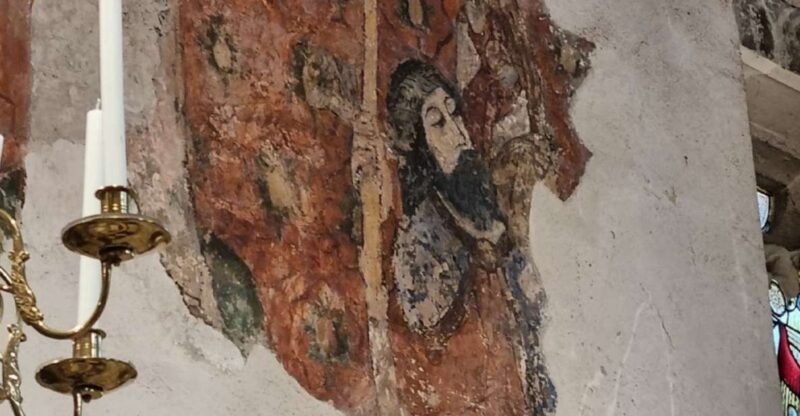
- Discover Cirencester’s rich Roman heritage through the captivating mosaics on display at the Corinium Museum.
- Explore the town’s prosperous wool trade legacy, evidenced in the grand ‘wool church’ of St John Baptist and the historic merchants’ houses.
- Enjoy the town’s vibrant history by visiting the lively Corn Hall Indoor Market, a gathering place for centuries.
- Marvel at the world’s tallest yew hedge, a botanical wonder on the Bathurst Estate, and stroll through the expansive Cirencester Park grounds.
- Uncover the town’s connection to King Henry IV, who contributed funds for the reconstruction of St John the Baptist Church.
Corn Hall Indoor Market

The tour begins at the Corn Hall Indoor Market, a lively hub where visitors can explore local produce, crafts, and more.
Housed in a beautiful Victorian building, the market offers a glimpse into Cirencester’s vibrant history.
Wander through the bustling stalls, which sell everything from fresh-baked bread to handmade pottery. This is where the town’s residents have gathered for centuries to buy and sell their wares.
As you browse the market, imagine the lively scenes that must have played out here over the years, with merchants haggling and customers scurrying about.
The Corn Hall is the perfect starting point to learn about Cirencester’s rich cultural heritage and get a taste of the local community.
Loving the local insights? Here are more guided experiences we recommend in Cirencester
Corinium Museum’s Roman Mosaics
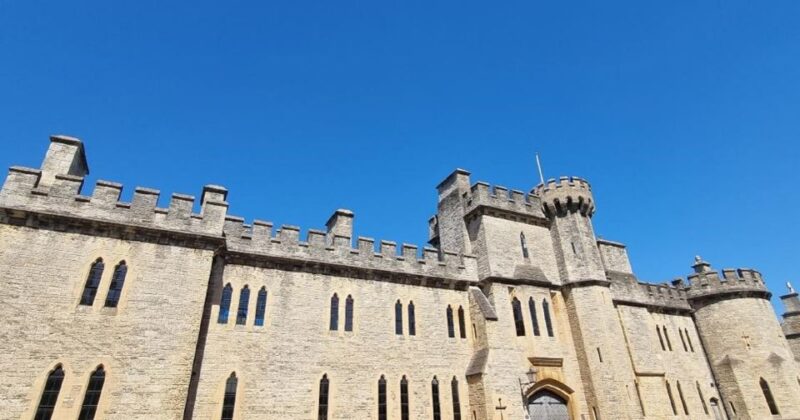
Visiting the Corinium Museum provides a captivating glimpse into Cirencester’s Roman past, with its impressive collection of well-preserved mosaics that once adorned the floors of affluent villas.
These intricate, colorful artworks offer a tantalizing window into the sophisticated tastes and lifestyles of the town’s elite residents during the Roman era.
The museum’s mosaics showcase a range of designs, from geometric patterns to depictions of mythological figures and scenes of daily life.
As visitors explore these stunning relics, they can’t help but marvel at the skill and artistry of the Roman craftspeople who created them centuries ago, leaving an indelible mark on Cirencester’s rich cultural heritage.
St John Baptist’s Wool Church
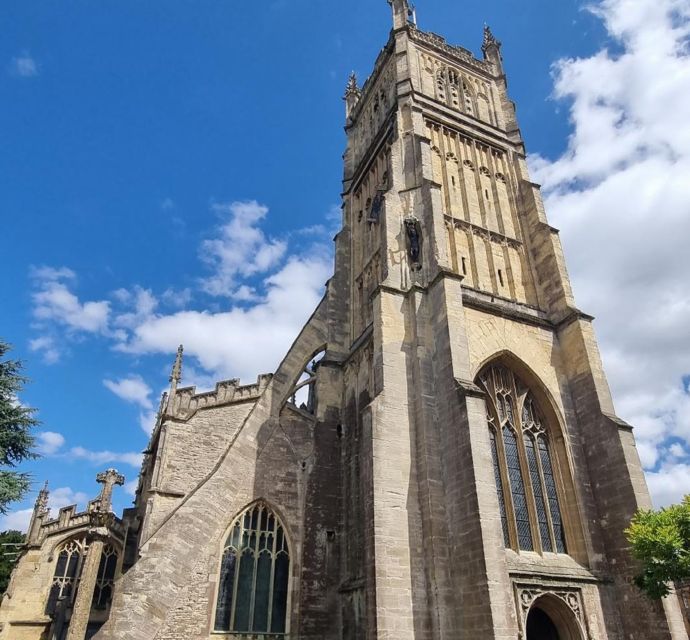
Prominently situated in Cirencester’s historic center, the grand St John Baptist’s Church stands as a testament to the town’s prosperous medieval wool trade. Often referred to as the ‘wool church‘, this magnificent structure boasts an impressive architectural style that seamlessly blends Gothic and Perpendicular elements, reflecting the wealth and influence of the local merchant class during the 15th century.
The church’s striking South Porch, adorned with intricate carvings and statues, serves as the main entrance, welcoming visitors to explore its vast interior.
Inside, the imposing nave and towering stained-glass windows create a sense of grandeur, showcasing the community’s devotion and prosperity during the height of the Cotswold wool industry.
Visitors can admire the beautifully preserved medieval memorials, including the impressive tomb of Sir John de Cernay, a renowned local wool merchant.
The church’s role in the town’s history is further highlighted by its connection to King Henry IV, who provided funds for its reconstruction in the early 15th century.
Today, St John Baptist’s Church remains a vital part of Cirencester’s cultural and architectural heritage, offering visitors a glimpse into the town’s prosperous past.
Merchants’ Historic Houses
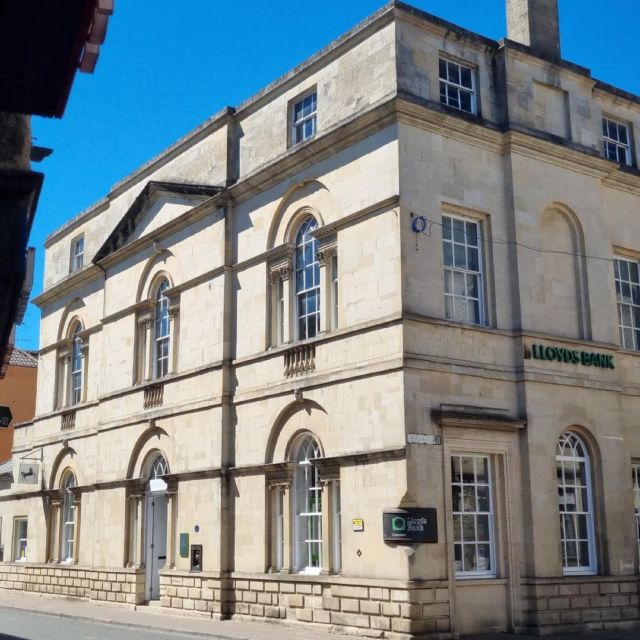
Strolling through Cirencester’s historic center, visitors can uncover a trove of well-preserved merchants’ houses that testify to the town’s prosperous past during the medieval Cotswold wool trade.
These grand, timber-framed structures, adorned with ornate doorways and mullioned windows, showcase the wealth and influence of the local wool merchants who thrived in Cirencester centuries ago.
Many of the houses still retain their original architectural features, providing a tangible link to the town’s rich history.
As visitors explore these historic dwellings, they’ll gain a deeper appreciation for the pivotal role Cirencester played in England’s once-thriving wool industry, and the legacy of the prosperous merchants who called this Cotswolds capital home.
More Great Thing To Do NearbyCotswold Wool Trade Origins
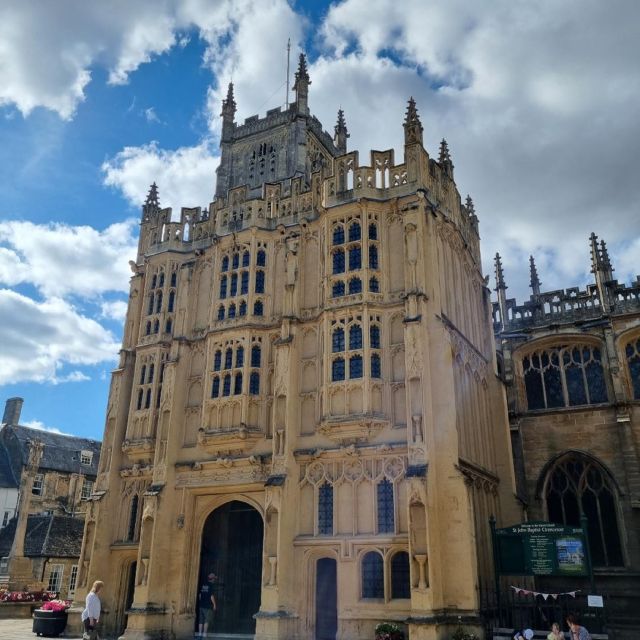
The Cotswold wool trade’s origins can be traced back to the region’s fertile sheep-grazing lands, which allowed local farmers to amass substantial flocks and capitalize on the growing European demand for high-quality English wool during the medieval period.
Cirencester, the ‘Capital of the Cotswolds,’ played a pivotal role in this thriving industry:
- It served as a central hub for wool production and distribution, with merchants and traders flocking to its bustling markets.
- The town’s wealth and influence grew, leading to the construction of grand ‘wool churches’ like St John Baptist.
Wool-related terms like ‘daylight robbery’ and ‘teetotallers’ even entered the local lexicon.
The industry’s success enabled the town to rebuild its parish church with the help of King Henry IV.
The Cotswold wool trade’s legacy can still be seen in the grand estates and landscaped parklands that dot the region.
St John the Baptist Church
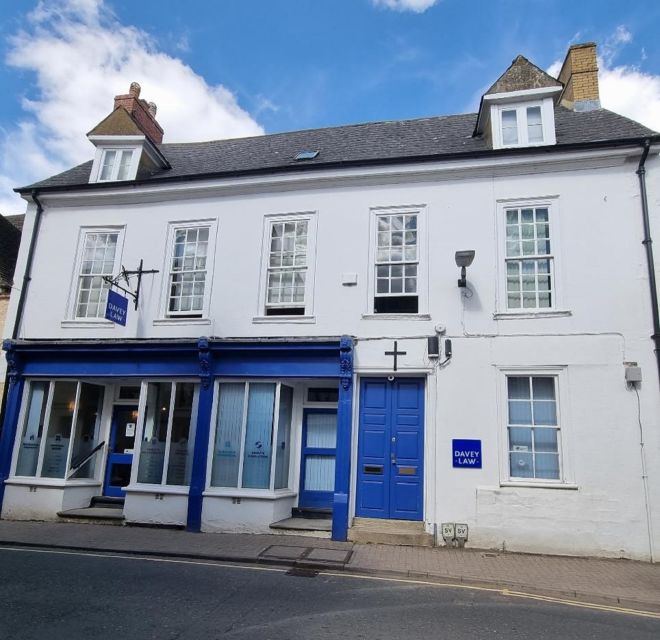
St John the Baptist Church, one of Cirencester’s most iconic landmarks, stands as a testament to the town’s prosperous wool trade era.
Its grand ‘wool church’ architecture reflects the wealth and influence the industry brought to the region during the medieval period.
Visitors can explore the church’s magnificent South Porch, which features intricate carvings and ornate decoration.
Inside, they’ll discover the impressive nave, adorned with stunning medieval stained glass windows.
The church also holds a unique connection to England’s history – it was here that King Henry IV contributed funds to help rebuild the parish, showcasing its significance in the community.
Today, St John the Baptist Church remains a beloved landmark, offering a glimpse into Cirencester’s prosperous past.
Bathurst Estate’s Great Yew Hedge
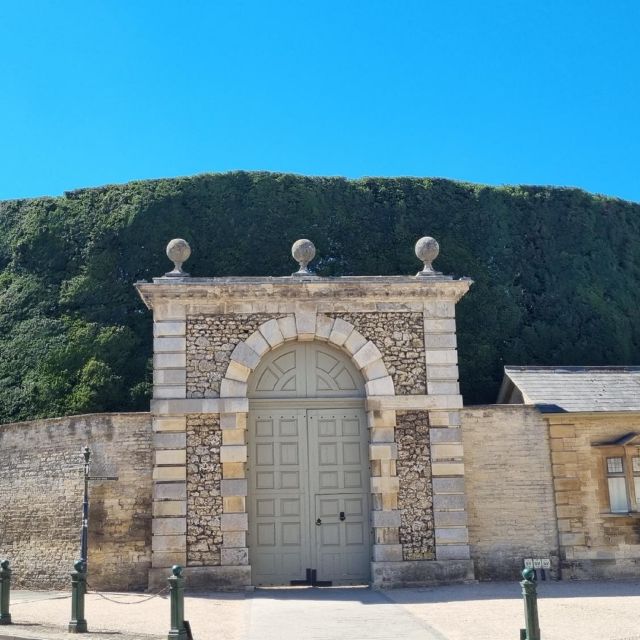
Towering over the expansive Cirencester Park, the Bathurst Estate’s Great Yew Hedge stands as a botanical marvel, claiming the title of the tallest of its kind in the world. This ancient living hedge, carefully cultivated over centuries, captivates visitors with its staggering height and lush, verdant foliage.
Stretching an impressive 15 meters high, the hedge is a testament to the estate’s dedication to preserving its natural heritage.
Yew trees, known for their longevity and medicinal properties, form the backbone of this impressive landscape feature.
Visitors can stroll along the hedge, marveling at its sheer scale and the intricate pruning techniques required to maintain its towering presence.
The Great Yew Hedge stands as a living symbol of Cirencester’s rich history, blending the grand design of the Bathurst Estate with the natural wonders of the Cotswolds.
A true highlight of the self-guided tour, the Bathurst Estate’s Great Yew Hedge offers a unique and awe-inspiring glimpse into the region’s botanical treasures.
Cirencester Park’s 14.5-Thousand-Acre Grounds
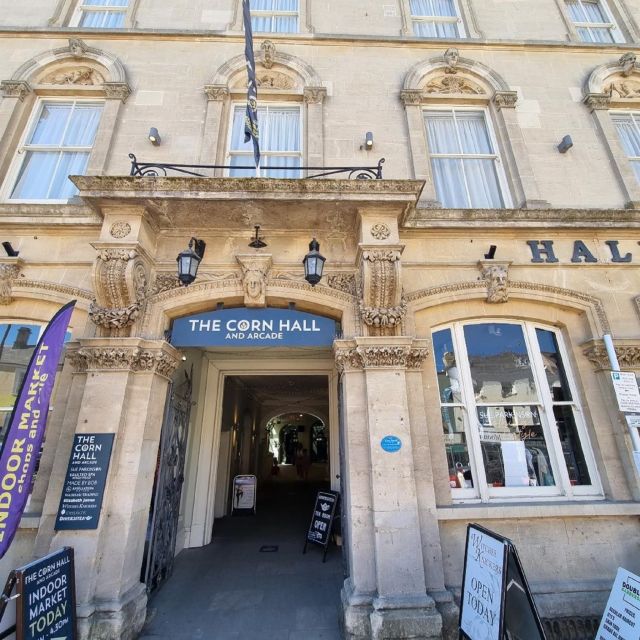
Sprawling across an area of 14.5 thousand acres, Cirencester Park’s expansive grounds offer visitors a captivating glimpse into the region’s natural splendor.
Carefully designed by renowned landscape architect Capability Brown, the park’s meticulously manicured landscapes, winding paths, and serene lakes create an idyllic setting for leisurely strolls and exploration.
Visitors can discover hidden gems, such as the tranquil brook and the ornamental garden, while enjoying the park’s diverse wildlife, including deer and a variety of bird species.
Whether you’re seeking a peaceful retreat or a chance to learn about the Cotswolds’ natural beauty, Cirencester Park’s sweeping vistas and well-tended grounds are sure to leave a lasting impression.
Frequently Asked Questions
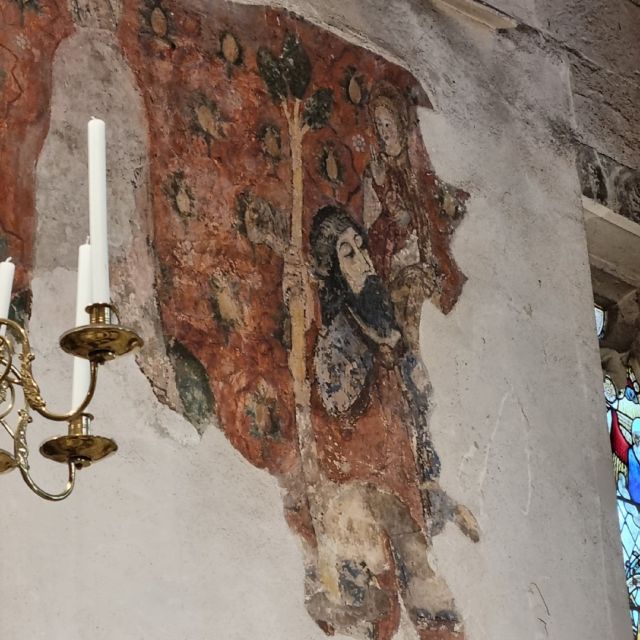
What Were the Common Occupations in Medieval Cirencester?
In medieval Cirencester, common occupations included wool production, cloth-making, and leatherwork. The town’s prosperous wool trade led to the emergence of wealthy merchant families who played significant roles in the local economy and governance.
How Did the Cirencester Abbey Influence the Town’s Development?
The Cirencester Abbey played a significant role in the town’s development. It was a wealthy and influential institution that shaped the local economy, architecture, and religious life in Cirencester during the Middle Ages.
What Local Legends or Folklore Are Associated With Cirencester?
Cirencester has several local legends and folklore associated with the town. One legend tells of the "Cirencester Witch," a woman believed to have supernatural powers who was executed in the 18th century. Another story involves a dragon terrorizing the town in medieval times.
What Were the Architectural Styles Used in Cirencester’s Historic Houses?
Cirencester’s historic houses feature a variety of architectural styles, including Cotswold stone construction and Tudor-era timber framing. Many showcase the town’s prosperous past as a center of the medieval wool trade.
How Did the Industrial Revolution Impact Cirencester’s Economy and Society?
The Industrial Revolution had a mixed impact on Cirencester’s economy and society. While it brought new industries, it also disrupted traditional wool and agriculture-based livelihoods, leading to economic shifts and social changes within the town.
Recap
Cirencester’s rich history comes alive on this self-guided audio tour.
Visitors can enjoy the town’s prosperous wool trade, admire magnificent architecture, and explore the grand Bathurst Estate.
From the Corn Hall’s local market to the Corinium Museum’s Roman mosaics, the tour provides a captivating journey through Cirencester’s hidden past, inviting guests to uncover the unique character and heritage of this Cotswold gem.
You can check if your dates are available here: